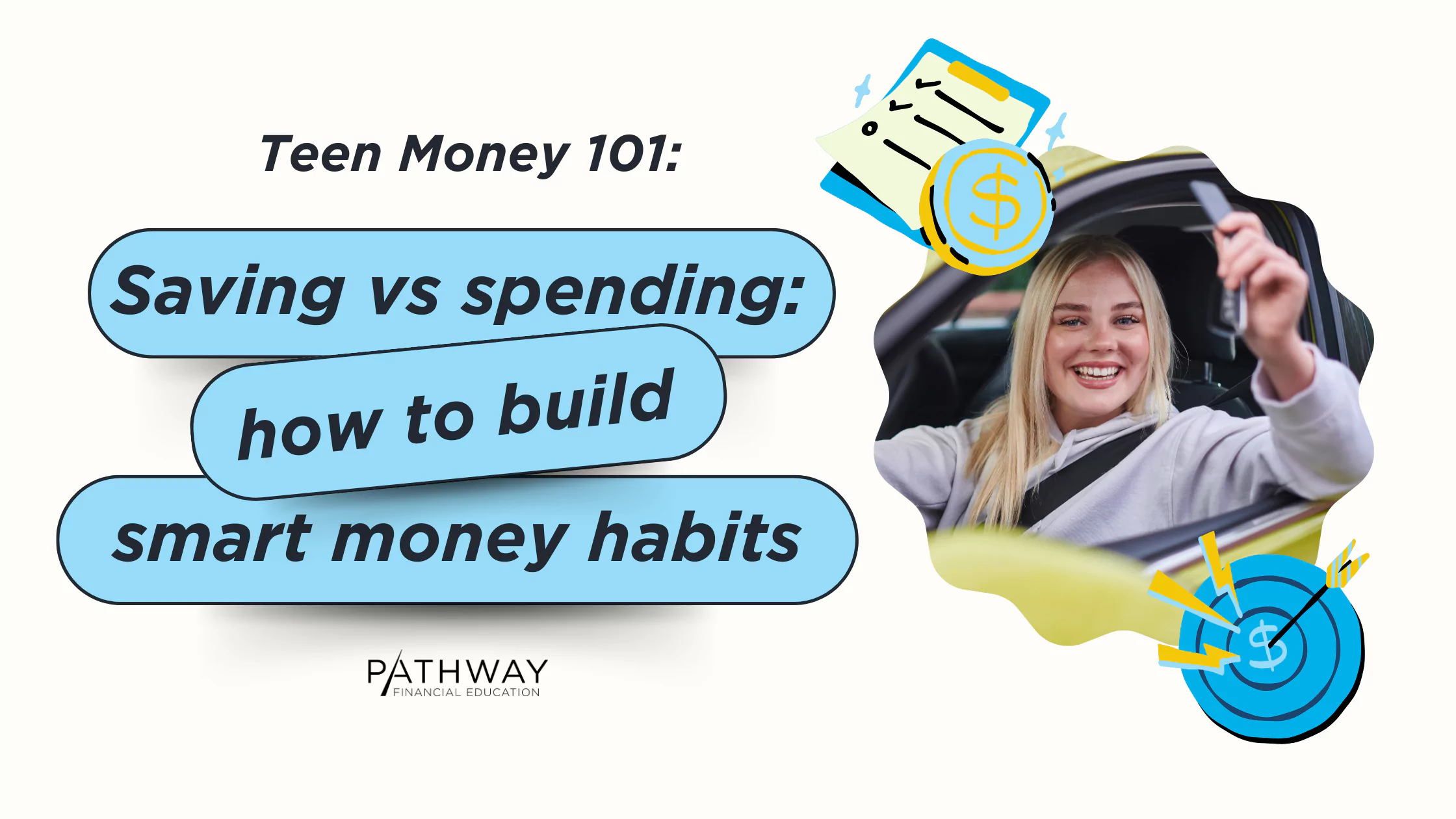
If you’ve ever bought something on impulse and regretted it later, you’re not alone. Whether it’s fast food, a new shirt, or something random from TikTok — spending money feels easy… until your wallet’s empty.
But here’s the thing: managing your money doesn’t mean you can’t ever spend — it just means learning how to spend smart and save for things that matter.
Smart money habits help you:
-
Stop feeling broke
-
Reach your goals faster
-
Still have fun without stressing about cash
Let’s break down the difference between saving and spending — and how to get better at both.
Saving = Paying Yourself First
Saving isn’t about locking your money away forever. It’s about setting aside cash for:
-
Future goals (like a car, college, or a trip)
-
Emergencies (like when your tire goes flat or your phone dies)
-
Big stuff that matters to you
Even saving a little each week adds up fast. And the earlier you start, the more freedom you’ll have later.
Try this:
Pick a simple goal:
-
$100 for a summer concert
-
$200 for college apps or dorm supplies
-
$500 for a used car fund
Then figure out how much to save per week. If you save $10 a week, that’s $520 a year — from just ten bucks.
Spending = Choosing What’s Worth It
Spending money isn’t bad. But smart spending means asking:
-
Do I actually want or need this?
-
Will I care about it next week?
-
Is this helping me reach my goal — or pulling me away from it?
If you’ve ever said, “I don’t know where all my money went,” it’s probably time to start tracking your spending. Even just writing down what you spend for a week can be eye-opening.
Try this:
Before you buy something, pause and ask:
“Is this worth it to me — or am I just bored, stressed, or influenced?”
Bonus tip: Carrying cash (instead of using a card or app) makes it way easier to see your money and spend more intentionally.
Impulse Spending Is Real — But You Can Outsmart It
Stores, ads, and apps are designed to make you spend without thinking. It’s not your fault — but it is your job to fight back.
Common triggers:
-
Social media trends (“Everyone has this… I need it.”)
-
Boredom scrolling
-
Pressure from friends
-
Emotional spending (sad? stressed? Treat yo’self?)
It happens. But you can catch it before it becomes a habit.
If you see something you want to buy — don’t buy it right away. Wait 24 hours. If you still want it (and it fits in your budget), go for it. If not? You just saved money and avoided regret.
Another tip: If it’s under $10 and wasn’t part of your plan, ask yourself:
“Would I still want this if I had to use cash to pay for it?”
Paying with actual money feels different — and helps you slow down.
Build Habits That Stick
You don’t need to overhaul your entire life to build smart money habits. You just need to start small — and stay consistent.
Here are a few habits you can start this week:
-
Put $5 into savings before you spend anything else
-
Track your purchases (even if it’s just in your notes app)
-
Unfollow one influencer or brand that tempts you to impulse shop
-
Pause before you buy and ask: “Is this helping me, or just draining my money?”
Each time you make a thoughtful choice, you’re building financial confidence — and that adds up way faster than you think.
Real Talk: This Is About You — Not Perfection
There’s no one “right” way to manage your money. What works for your friend might not work for you. And guess what? You’re going to mess up sometimes — and that’s okay.
The goal isn’t perfection. It’s awareness. It’s learning to think before you spend. It’s giving your money a job instead of letting it disappear without a trace.
The more you practice, the more control you’ll have — and the easier it gets.
Up next, check out What Every Teen Should Know About Banking.




